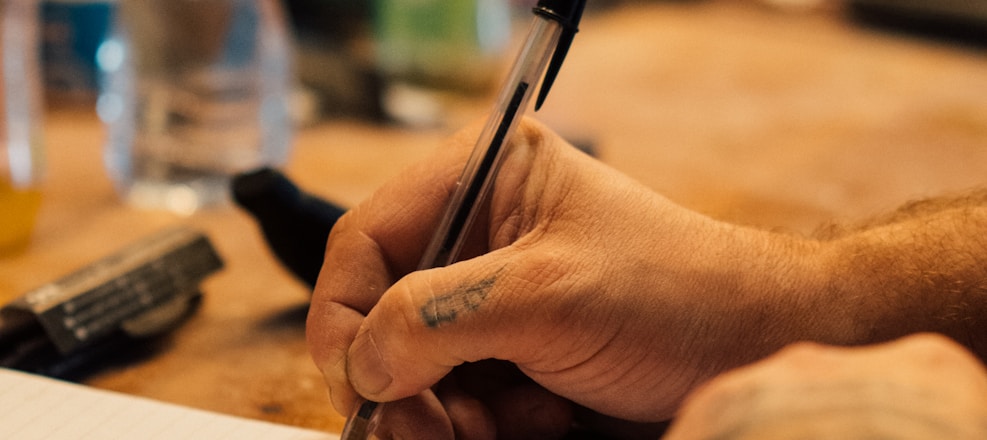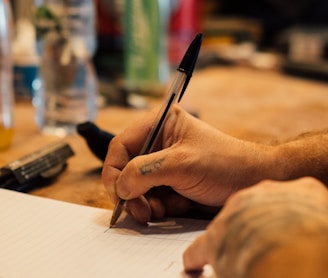UNDER THE SUN OF OUPLISTSIKHE
Every month, we try to gather the experiences of stonemasons and stone enthusiasts abroad, particularly in the Eurasian region. So you'll find a wealth of stories and different perspectives! This month, we are honoured to be able to share the words of Ombeline Tamboise, documentary filmmaker, who takes us on an intimate journey through the rocks of an ancient troglodyte city: Ouplistsikhe.
COLLABORATION
Ombeline Tamboise
8/14/2024
Twenty kilometres from the workshop where Louis and Orianne work is the troglodyte city of Ouplistsikhe, one of the oldest human settlements in the Caucasus, carved out of the rock in the Iron Age. The city developed as early as the first millennium BC, and enjoyed a golden age from 600 BC to 337 AD, the date of Georgia's conversion to Christianity. The city was one of the most important pagan sanctuaries in the region and a central staging post during the Middle Ages on the Silk Roads.
I'm Ombeline and I'm working on a documentary about the Stone Road.
This July I joined Louis and Orianne in Georgia.
This morning, as I arrived in Ouplistsikhe, I was a little frustrated. Three thousand years of history and mankind's first technical discoveries lay before me, but I could hardly grasp the full extent of the miracle. The site is absolutely sublime. Masses of stone open up, cut into each other and melt into one another like chunks of liquid rock, and arches carved out of the material offer breathtaking views over the landscape. It's magnificent and I'm happy to see it. But I can't quite connect with it. Kids in brightly coloured clothes are jumping up and down and shouting, hanging on the hands of their parents who are treading on these millennia-old jewels, and the guide gives me a succession of dates that feel like a dead language. Dead stone. I need to rediscover the feeling of stone, of an archaic memory, perhaps still inscribed in my body, a life within me that I sense and whose path I am trying to discover.
It's hot, the sun's rays are falling straight onto the sandstone surface and reverberating. I'm tired. I settle down inside a cave chosen at random, with no sign. The darkness soothes me. I take out my camera. And suddenly I see her. This thousand-year-old grandmother, all stained and cracked. A cut-out gorge forms a tunnel of light in front of me. The rays reflect off the walls and draw white circles in different parts of the cellar. On my right too, Roman-style pillars have been crudely carved.




From top to bottom: Detail of the rock at the Ouplistsikhe site; Louis Dutrieux and Ombeline Tamboise in front of the church at Ruisi


I feel in touch with the mystery of our human journey. From a wall that strongly resembles a womb, with all the fusion and liquidity that implies, to the separation that implies the creation of forms, the use of art and language. From the belly of this big, soft bear to the presence of Apollo, there is the whole journey of discovery, exchange and relations between cultures. Who are all these men who have worked for centuries to build this Roman column? What were they thinking? What did they love? How did they conceive the world and what links led them to this choice?
I talk to Louis and Orianne about this. I also tell them that I would have liked to have seen some unique architecture here, typical of the region, and that I don't understand the choice of using Roman codes.
But... perhaps it's simply a question of the know-how and technical knowledge of the time, they tell me. Builders constantly drew inspiration from each other and from the advances of their contemporaries. We took what worked best. We had to make something that held together and offered elegant volumes. The gap between my aesthetic aspirations and the concrete reasons put forward by Louis and Orianne made me dizzy. I realised the extent of technical knowledge and its implications for artistic development. I think of the long march of humanity from Uplistsikhe to our glass and iron buildings. I realise how contact with matter and its resistance has unfolded human inventiveness. Matter confronts us, awakens the immensity of our desires, frustrates us. And from this confrontation springs the singularity of an era.
I leave the cave moved. I see once again the long curves and precipices carved by the rock, and the interiors burnt out by the various invaders who grazed their flocks in the cellars, with no respect for the richness of the past.
And I say to myself that if the memory of these men, of their dreams, of their sensibility disappears, then so does the possibility of rediscovering a connection with matter.








Various views of the interior of the town of Ouplistsikhe. The three photos on the right highlight the play of light described.


Each month, in the monthly newsletter of La Route de la Pierre, we share with you feedback from experiences lived through the expedition, but also, we transcribe the voice and the portrait of certain stonemasons and colleagues crossed on the road. or close to us. Today the newsletter is beginning to have a wider audience and so that this medium can best meet one of its requirements, that is to say give voice to stonemasons and transcribe bits of experience, of ideas and points of view around the trade and the stone, what better than to ask you to participate directly in the writing of the articles?
For who ?
Whether you are a stonemason, architect, quarryman, sculptor, geologist... You are an actor in the world of stone, passionate or close to the profession or the material , feel free to contribute to the newsletter.
For what ?
Between feedback, visions of the profession and reflections, it is with great editorial freedom that the newsletter of La Route de la Pierre wants to communicate around stone cutting by bringing together experiences and stories of men and of women who live, think and build the world of stone.
How ?
Participation in the newsletter is completely voluntary. To be published there, all you have to do is send us an email, introducing yourself and briefly explaining your writing project. We can then determine together the format and the publication date of your article.

The newsletter of La Route de la Pierre?
La Route de la Pierre publishes a monthly newsletter that allows you to relate the observations of the project surrounded by reflections around the stone and the trade. The newsletter is an initiative of the La Route de la Pierre project and belongs to the Savoirs-Pierres association. Some of the articles are then posted on the journal of our website. All bulletins can be viewed here: https://www.calameo.com/accounts/7258503
An article in wich kind of format?
The article must be written and sent in word or text format. All text should be no longer than 7,000 to 7,500 characters in Arial 12 font. You will need to think of a title and consider defining any technical terms and jargon, if used. It is preferable to sign your name, but it is quite possible, in the event of a sensitive subject, to make the article anonymous. For details and any other questions, we can discuss them when we make contact, before writing. Here is an example of a contribution published in the February 2023 issue: https://www.laroutedelapierre.com/sur-la-piste-du-desert
WANT TO PARTICIPATE ?
Contact us by e-mail using this form.



FAQ
Read the previous Newsletters ...




Follow the project ...
Editorial by the La Route de la Pierre team
©️La Route de la Pierre | Legal Notice | Privacy Policy | General Terms and Conditions of Sale
